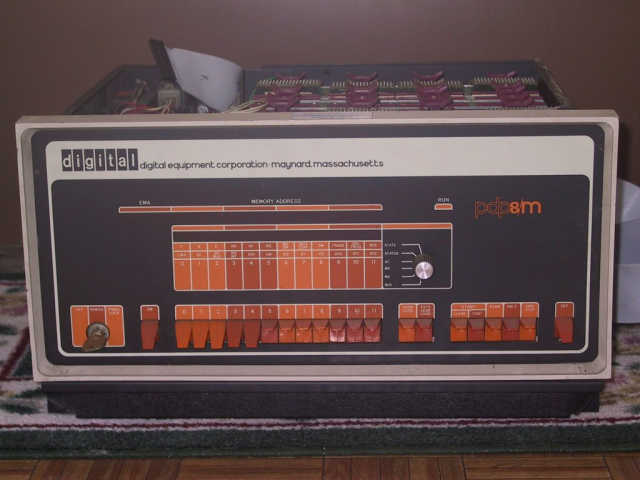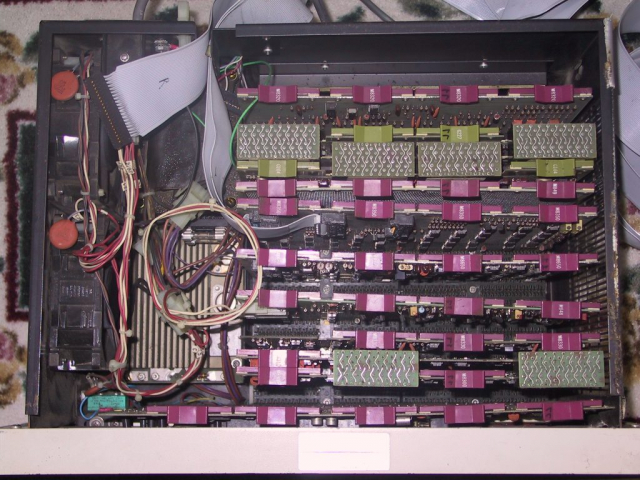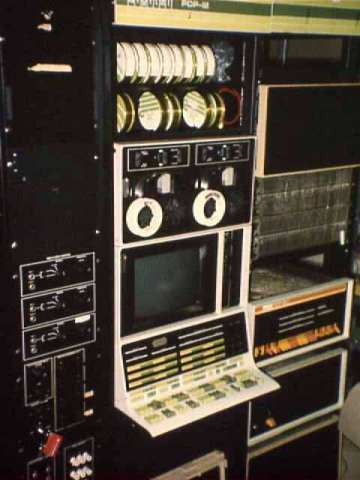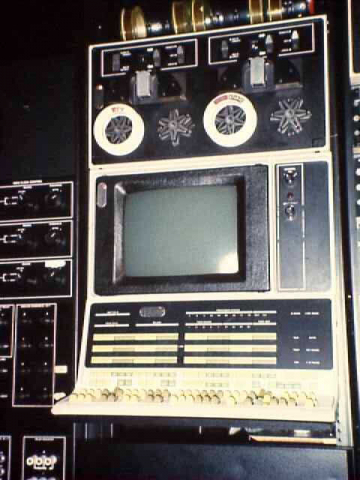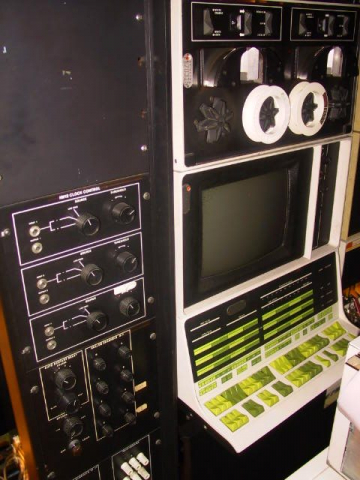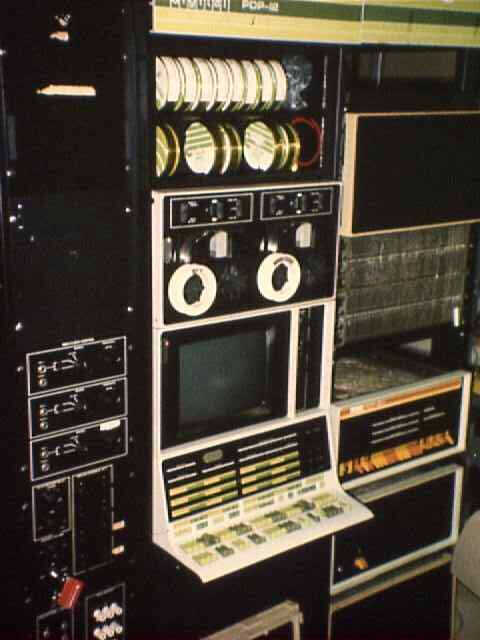
I have three machines from the PDP-8 family of computers: a PDP-8/L, a PDP-8/m and a PDP-12.
PDP-8/L
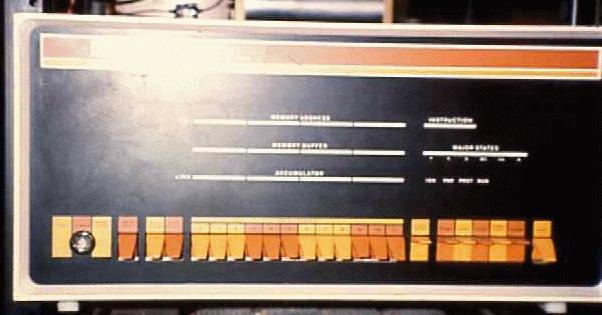
The PDP-8/L was the first minicomputer in my collection. (Though I did own the Altair 8800 at the time). It was purchased for around $250 (in part a birthday present from my wife) from the “Second Bytes” used computer store in Milwaukee, Wisconsin. The system has 4K of core memory in the main unit, and an additional 8K of core in an expansion unit. (The expansion unit is just below the PDP-8/L in the combined PDP-8 PDP-12 picture at the top of the page). I got my ASR33 teletype as part of the deal. Although the ASR33 has worked well for a number of years since then, it has recently become somewhat cranky. More than anything, it probably needs proper cleaning and lubrication. Fortunately, I do have the appropriate manuals for the job, if not the training and skill.
PDP-8/m
I obtained my PDP-8/m some time ago from the University of Wisconsin SWAP (Surplus with a Purpose) operation. Unfortunately, I don’t have any rack space for it, so it is currently sitting rather ignominiously on my basement floor, in front of the PDP-12. I have done some repairs on it, but have not gotten to work on it in some time. The photos above were taken in 2005.
PDP-12
The PDP-12, like many of the systems in my collection, was obtained at nominal cost with the help and coordination of the University of Wisconsin surplus program. The PDP-12 is a very interesting system. It contains within it two processors rolled into one: A PDP-8/I and a LINC. (In this respect, is somewhat resembles the IBM 1410). Unlike the 1410, however, the PDP-12 is capable of switching between the two modes during execution, by using I/O family instructions to switch back and forth. The PDP-12 was quite popular as a medical and data acquisition machine, because of its wide array of analog and digital “real world” interfaces. It also sports a CRT display.
In the PDP-12 photograph above, you can also see the PDP-12 VR14 CRT, above the console, and the LINC Tape drive, above the CRT. Mechanically, the drive is a TU56 tape transport, the same as is used on the PDP-11 DECTape drive.
In my collection, the PDP-8/L is currently installed in a rack together with the PDP-12, as illustrated in the photo near the top of this page.

